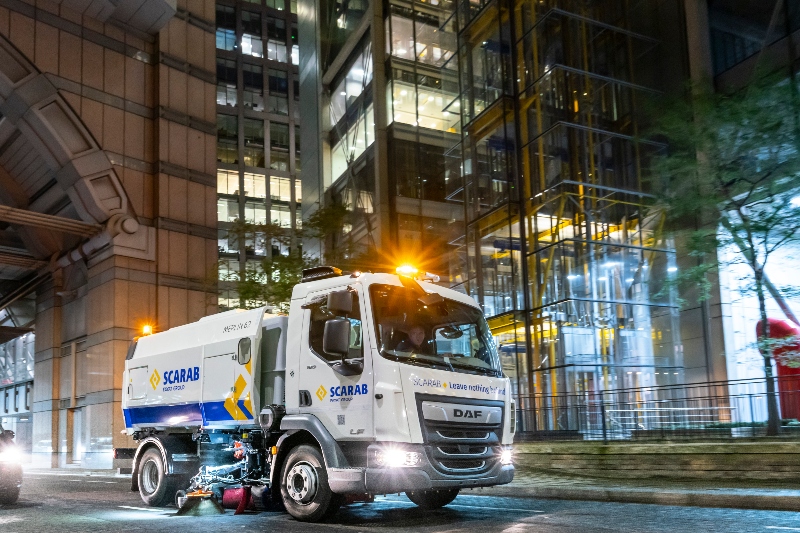With the end of the tax rebate on red diesel, Scarab’s single engine sweeper comes into its own.


Legislation surrounding the use of red diesel is changing in the UK from 1 April and it is set to trigger seismic change across the sweeping industry. For years, municipal and contractor operators have climbed into the cabs of their twin-engine sweepers, relying on the subsidised rates provided on red diesel. However, with this legislative change, many are looking for a more sustainable solution.
For over 30 years now, Scarab has been promoting the environmental benefits of our single engine technology and now, with many concerned by the end of the red diesel tax rebate, they are primed to support operators as they transition away from twin engine machines.
Scarab first pioneered the single engine road sweeper in the 1980s and has continued to deliver our expertise at the sharp end of the industry. Our single-engine machines are lighter, provide a greater payload, produce reduced engine emissions and consume less fuel than comparative twin-engine machines.
A full range of solutions
Our collection of single engine machines ranges in size from 7.5 to 18 tonnes and comes equipped with 5.5, 6.2, 7.2 or 8.2 cubic metre hoppers. Each machine can deliver exceptional suction performance thanks to Scarab’s short, efficient airflow path that only bends three times before passing through the suction fan, which is mounted to the roof of the hopper. Crucially, with only one engine, there is also only one source of emissions.
The result? A huge reduction in fuel consumption and NOx emissions compared to comparable Stage V twin engine models.
The secret behind Scarab’s hydrostatic system
At the core of our single engine system is Scarab’s innovative hydrostatic gearbox. This gearbox is installed directly into the chassis driveline which allows all the sweep components to be powered from the truck engine alone, which leads to a more efficient use of fuel.
When the machine is in ‘Travel’ mode, the Scarab gearbox provides a direct connection with the output from the truck’s transmission to the input of the rear axle and so the vehicle behaves exactly as if the gearbox was not there. However, in ‘Work’ mode, the power output from the truck is redirected from the gearbox to power our custom configured hydraulic pumps which, in turn, provides power to the suction fan, sweeping equipment and a powerful, electronically controlled pump that drives the robust hydraulic motor. This motor is responsible for driving the rear axle and provides the operator with precise control of sweeping operations up to 15mph.
As well as bringing a range of performance benefits such as reduced weight, increased payload, reduced fuel consumption and lower emissions, the single engine configuration also offers a range of operator benefits to make sweeping as effortless as possible. These include:
• Easy to Engage |Once the machine has been brought to a stop, it takes less than 20 seconds to enter sweep mode and begin working.
• Easy to Operate | Single pedal control and joystick functions make sweeping easy. The operator dictates the vehicle’s movement by simply pressing the joystick forwards or backwards.
• Easy on the Environment | Single engine machines produce less engine emissions and harmful particulates.
• Easy to Maintain | With no auxiliary engine to worry about, our single engine customers benefit from lower maintenance costs and less machine downtime. Our single engine machines also experience less brake and clutch wear due to the system’s ease of operation when in Hydrostatic Mode.
• Easy to Trust | Our innovative hydrostatic system has proved to be an incredibly reliable solution – that’s why we are confident in providing our customers with bespoke warranty packages to suit their needs.
Scarab’s business development manager Andy Farley, who has been with the company since 1987, commented: 'It has been rewarding to see the product evolve over the years, continue to meet the ever-changing demands of the industry and still come up trumps. When you speak to Scarab customers and operators, you are rewarded with the confidence that our single engine products stand up and rival any twin-engine counterparts – to have seen our machines evolve to reach this level is outstanding. I like to explain to people that may be new to the Scarab product that it literally only takes 15 seconds to consider the environment, the same time it takes to enter hydrostatic mode and begin sweeping.’